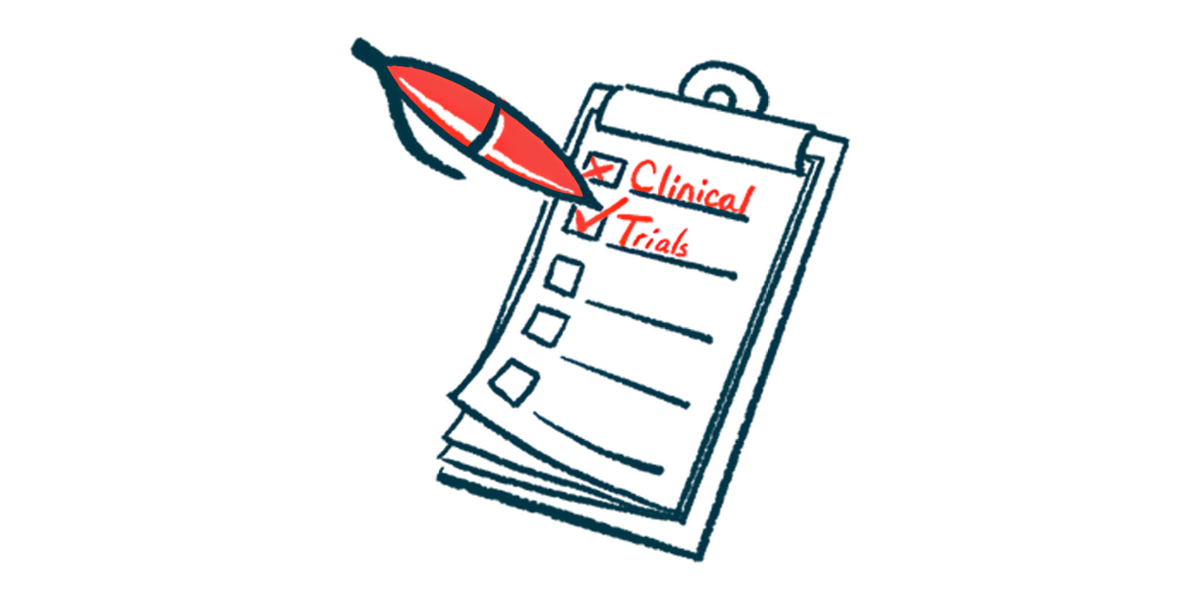MGFA Session 2025: Imaavy eases gMG in teens for up to 1.5 years
Data from trial extension represent potential advance in pediatric patient care

Treatment with Imaavy (nipocalimab-aahu) has led to sustained disease control for up to 1.5 years among adolescents with generalized myasthenia gravis (gMG), according to data from the long-term extension (LTE) part of a Phase 2/3 clinical trial.
The study, called Vibrance-MG (NCT05265273), is now evaluating Imaavy’s safety and efficacy in a group of younger children, ages 2-11. It is still recruiting at sites in the U.S., Japan, and Europe.
Jonathan Strober, MD, a study investigator at the University of California, San Francisco Benioff Children’s Hospital, presented the findings in a talk, titled “Safety and Efficacy Results of Nipocalimab in Adolescents with Generalized Myasthenia Gravis During Active-Treatment and Long-Term Extension Phases: vibrance- mg Phase 2/3 Study.” The presentation was part of the Myasthenia Gravis Foundation of America (MGFA) scientific session at the American Association of Neuromuscular & Electrodiagnostic Medicine (AANEM) annual meeting, held Oct. 29 in San Francisco.
“Pediatric patients with gMG have long been an underserved population in neuromuscular disease research,” Strober said in a press release from Johnson & Johnson, the company that markets Imaavy. “These data represent an important potential advance in the care of pediatric patients, offering hope for lasting disease control.”
Imaavy approved in US for adult, adolescent gMG patients
The symptoms of gMG, including muscle weakness and fatigue, are driven by self-reactive antibodies that cause damage to the sites where nerve and muscle cells communicate.
Given via infusions into the bloodstream once every two weeks, Imaavy is designed to ease disease severity by lowering the levels of these harmful antibodies. It does so by blocking the neonatal Fc receptor (FcRn), a protein that would normally prevent gMG-driving antibodies and others in their class, called immunoglobulin G (IgG), from being broken down.
It’s approved in the U.S. for adults and adolescent gMG patients, ages 12 and older, who are positive for disease-driving antibodies targeting the acetylcholine receptor (AChR) and muscle-specific kinase proteins.
The therapy’s approval for adolescents was supported by findings from Vibrance-MG, which enrolled eight adolescent gMG patients, ages 12-17, who had anti-AChR antibodies and poorly controlled symptoms despite stable standard-of-care treatment.
After an initial loading dose, all participants received Imaavy infusions of 15 mg/kg once every two weeks for about six months, on top of standard care. That was followed by an LTE period, where participants are either continuing to receive the 15 mg/kg dose every two weeks or are being switched to a once-monthly dose of 30 mg/kg.
Levels of key antibody drop by nearly 75% after 6 months
In this presentation, Strober provided updated findings from the main part of the trial and reported new long-term data from the study’s LTE portion, covering up to 72 weeks, or about 1.5 years, of treatment.
Consistent with previously reported findings from the first seven patients, data from all eight enrolled adolescent participants showed that Imaavy led to “rapid, substantial, and sustained” IgG reductions, Strober said in the presentation.
Specifically, IgG levels had dropped by a median of 73.3% after six months, an effect that was generally maintained for up to 1.5 years.
The treatment also led to improvements (reductions) in the scores of the MG Activities of Daily Living (MG-ADL), a patient-reported measure of gMG’s impact on daily life, and the Quantitative MG (QMG) scale, a clinician-rated measure of muscle weakness.
Strober noted there was a “clinically meaningful reduction” in MG-ADL scores that could be seen as early as one month and was generally sustained through the main trial and LTE.
Vibrance-MG is the first study to demonstrate efficacy of [an FcRn blocker] in adolescents … addressing a really unmet need that we have for our patients.
At each time point in the study, more than half of the participants had achieved minimal symptom expression, reflected by an MG-ADL score of 0 or 1, indicating that symptoms had minimal to no effect on daily life.
Similarly, QMG scores meaningfully declined after a month, which was sustained for up to 1.5 years.
These adolescent data are overall consistent with what has been observed in adults.
Imaavy was generally well tolerated, with “no significant adverse events or adverse events leading to the discontinuation [of Imaavy],” the scientist noted. The most common side effects were the common cold and COVID-19.
Overall, “Vibrance-MG is the first study to demonstrate efficacy of [an FcRn blocker] in adolescents … addressing a really unmet need that we have for our patients,” Strober said.
Note: The Myasthenia Gravis News team is providing virtual coverage of Myasthenia Gravis Foundation of America’s scientific session at the American Association of Neuromuscular & Electrodiagnostic Medicine Annual Meeting Oct. 29. Go here to see the latest stories from the conference.









Leave a comment
Fill in the required fields to post. Your email address will not be published.